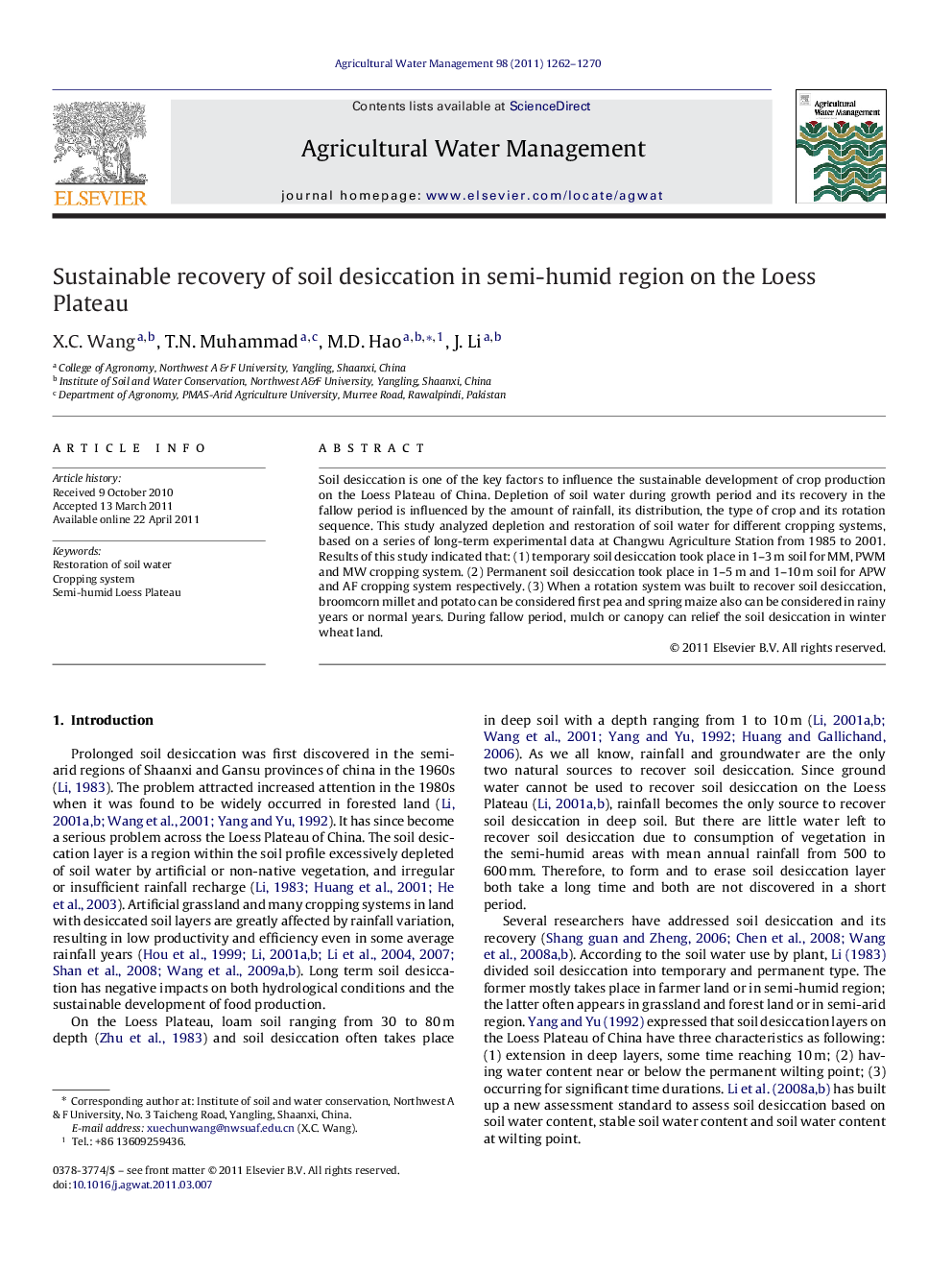| Article ID | Journal | Published Year | Pages | File Type |
|---|---|---|---|---|
| 4479485 | Agricultural Water Management | 2011 | 9 Pages |
Soil desiccation is one of the key factors to influence the sustainable development of crop production on the Loess Plateau of China. Depletion of soil water during growth period and its recovery in the fallow period is influenced by the amount of rainfall, its distribution, the type of crop and its rotation sequence. This study analyzed depletion and restoration of soil water for different cropping systems, based on a series of long-term experimental data at Changwu Agriculture Station from 1985 to 2001. Results of this study indicated that: (1) temporary soil desiccation took place in 1–3 m soil for MM, PWM and MW cropping system. (2) Permanent soil desiccation took place in 1–5 m and 1–10 m soil for APW and AF cropping system respectively. (3) When a rotation system was built to recover soil desiccation, broomcorn millet and potato can be considered first pea and spring maize also can be considered in rainy years or normal years. During fallow period, mulch or canopy can relief the soil desiccation in winter wheat land.
► Temporary soil desiccation took place in 1–3 m soil for MM, PWM and MW cropping system. ► Permanent soil desiccation took place in 1–5 m soil for APW cropping system. ► Permanent soil desiccation took place in 1–10 m for AF cropping system. ► Broomcorn millet, potato, pea and spring maize can be used to recover soil desiccation. ► Mulch or crop canopy can relief the soil desiccation in winter wheat land.
